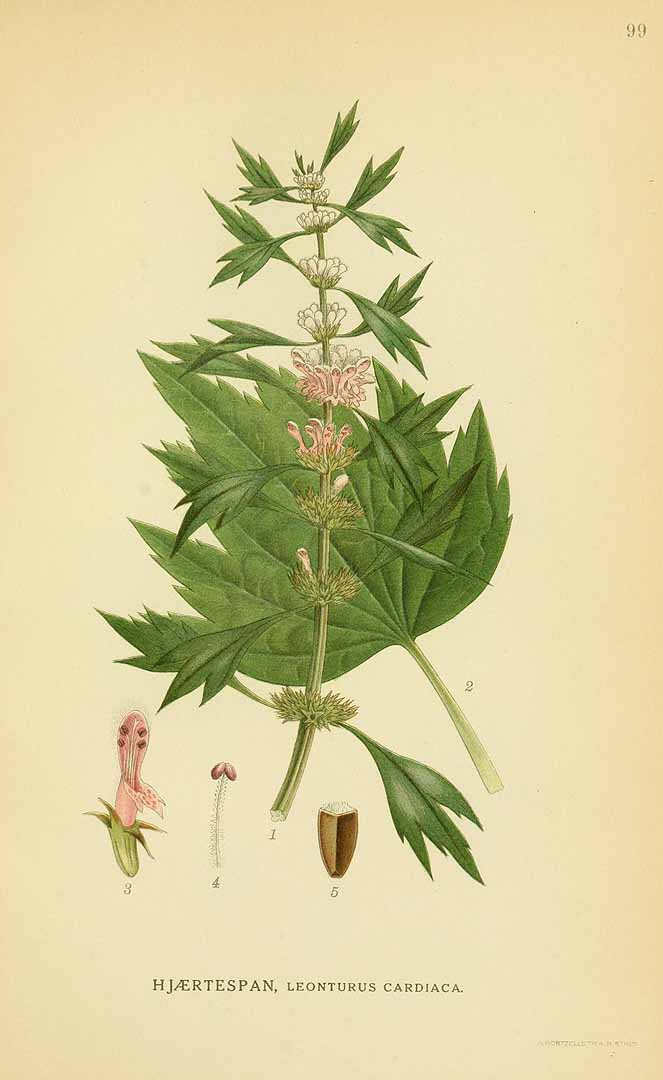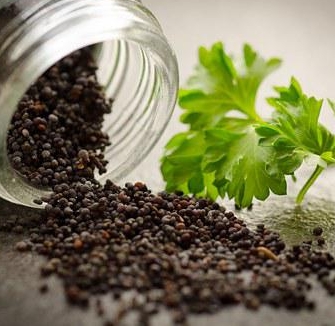FAINT OF HEART? FEAR NO MORE, MOTHERWORT CAN HELP YOU.
If you are a person who knows Latin, Motherwort is called Leonorus cardiaca. For the rest of us, that translates to Lion Heart.
SO WHAT’S IN A NAME?
Most of the time plants are named after the person who first classified them, or the region they grow in or originated from (California poppy’s Latin name is Eschscholzia californica). If the pharmacopea has deemed it the “official” plant, it’s name will often reflect that title. For example, medicinal calendula is called Calendula officinalis. There are no strict rules when it comes to naming a plant, it’s completely up to the person choosing whether they want to give the plant a name reflective of the its usefulness.
Whoever named our Herb of the Week wasn’t messing around. Akin to a hug from someone who loves you, Motherwort empowers you with a sense of stability, settles your churning stomach, un-clenches your teeth, and generally reminds you everything will turn out ok. It’s a good one to have around the house.
Do you enjoy a good tension headache? Love insomnia? Devise new and creative ways to take your stress level from 0 to 60? Well, then, Motherwort is not for you. And also, we recommend you seek counseling.
As it’s common name implies, Motherwort is a calming herb that offers emotional support. On a physical level, it eases nervous heart palpitations and generally strengthens the heart muscles, softly ‘mothering’ your body when it’s under serious (or mild) stress.
Ladies, it is especially awesome for any complications with your period; pain, bloating, general don’t-touch-me-the-world-sucks-ness, and can return regularity to a disrupted cycle.

MATERIA MEDICA
Latin Name: Leonurus cardiaca
Common Name(s): Motherwort
Geographic Distribution: Grows throughout the temperate regions of the world in sunny areas
Primary Uses:
- May quite anxiety and nervous heart palpitations
- Has an affinity for the female reproductive areas, helps with menopause and PMS by gently stimulating the liver to move excess hormones through
- Specific for cramping associated with delayed menses,
- Amenorrhea (lack of a period) with bearing down lumbar pain
- Will bring on the menses if feeling delayed or repressed
- Can restore the menses when it is repressed due to higher regulatory centers
- Good to bring on the menses when it won’t return after going off BC
- Good for helping with uterine drainage, will tone the uterine muscles
- Strengthens without straining the heart, is lionhearted, a warrior plant, it gives strength to the emotional heart
- Good for insomnia related to stress and anxiety
- Good for women who are feeling particularly sensitive emotionally
Preparation & Dosing:
- Tincture – Fresh Plant 1:2, Recently Dry Plant, 1:5, 60% alcohol; 30-60 drops
- Tea – standard infusion (not a good tasting tea, best as a tincture)
Energetics: Bitter, cool
Parts Affected: Heart, uterus, nervous system
Actions:
- relaxant
- cardiac relaxant
- anti-spasmodic
- emmenagogue
- stimulates the uterus
- relaxes the heart
- nervine
Biochemical Constituents: Alkaloids, flavonoids, tannins, caffeic acid
Cautions:
- May disrupt the menstrual cycle in high doses
- Do not take while pregnant
- Do not take if menses is heavy
Resources:
- Bennett, R.R (2014). The gift of healing herbs. Berkeley, CA: North Atlantic Books.
- Edwards, G.F. (2000). Opening our wild hearts to the healing herbs. Woodstock, NY: Ash Tree Publishing.
- Eich, K. (2009). Motherwort: Healing the Anxious Heart and Mind. Retrieved September 2014 from http://www.redrootmountain.com/motherwort-healing-the-anxious-heart-and-mind/53
- Foster, S. (1993). Herbal renaissance. Layton, UT: Peregrine Smith Books.
- Hardin, K. R. (2013). 10 Reasons to Love Motherwort. Retrieved September 2014 from http://bearmedicineherbals.com/10-reasons-to-love-motherwort.html
- Hoffmann, David (2003). Medical herbalism. Rochester, VT: Healing Arts Press.
- McIntyre, A. (1996). Flower power. New York, NY: Henry Holt and Company, Inc.
- Shikov, A. N., Pozharitskaya, O. N., Makarov, V. G., Demchenko, D. V. and Shikh, E. V. (2011). Effect of Leonurus cardiaca oil extract in patients with arterial hypertension accompanied by anxiety and sleep disorders. Phytotherapy Research, 25: 540–543. doi:10.1002/ptr.3292
Browse by category
- Aromatherapy
- Astrology & Magic
- Ayurdeva
- Botany Foraging & Gardening
- Chakras
- Digestion
- Earth Connection
- Energetics
- Flower & Gem Essences
- Folk Traditions
- Herbalism & Holistic Health
- Immune Support
- Materia Medica
- Mushrooms
- Nutrition
- Seasonal Living: Autumn
- Seasonal Living: Moon
- Seasonal Living: Spring
- Seasonal Living: Summer
- Seasonal Living: Winter
- Skin & Body Care

Don’t Miss a Thing!
Enter your email below to be the first to know about sales, new products and tips for taking care of your pieces.

